9 years after Zaria massacre, victims in search of elusive justice
Halima Salisu’s eyes welled up with tears as she recounted the devastating loss of her three children—Yakubu, 35, Usman, 32, and Musa—in the horrific December 2015 clash with the Nigerian Army, that led to the massacre of hundreds of members of the Islamic Movement of Nigeria (IMN), otherwise known as Shi’ites. Her husband and another […]
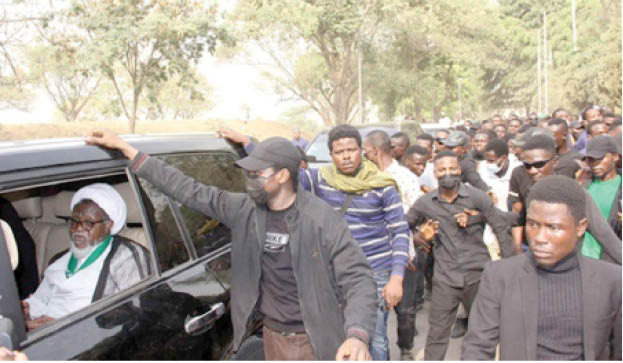
page 26 pic 1
Halima Salisu’s eyes welled up with tears as she recounted the devastating loss of her three children—Yakubu, 35, Usman, 32, and Musa—in the horrific December 2015 clash with the Nigerian Army, that led to the massacre of hundreds of members of the Islamic Movement of Nigeria (IMN), otherwise known as Shi’ites. Her husband and another son were imprisoned for years, their eventual release, offering no solace as both soon succumbed to the unending trauma.
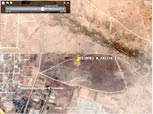
Halima herself is paralysed from the waist down, a living testament to the horror she endured. In her modest home in Tudun Jukun, Zaria, she faces threats against her life and has considered fleeing the town, but she clings to the fragments of strength that keeps her going.
In December 2015, the streets of Zaria poured with the blood of citizens as the Nigerian military unleashed what has come to be known as the Zaria massacre on members of the IMN. Hundreds of lives were reportedly snuffed out, leaving behind a trail of shattered families and a community engulfed in grief. Sheikh Ibrahim El-Zakzaky, the leader of the IMN and his wife, Malama Zeenah El-Zakzaky, were arrested and three of their children killed. Nine years have passed, but for many survivors, the scars remain raw and their cry for justice echo louder.

According to a 2021 article published for the Academic Forum of IMN, Prof. Isa Hassan Mshelgaru of the Ahmadu Bello University stated that the carnage had resulted in the deaths of 548 men, 297 women, and 193 children, making it a total of 1,038 lives lost. Among the women killed, 23 were reportedly pregnant. However, reports from Amnesty International and Human Rights Watch (HRW), documented more than 350 people to have been “unlawfully killed by the military” with nearly 100 families wiped out.
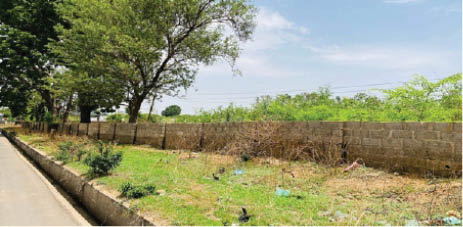
To set the record straight and quell major misinformation and disinformation on the tragedy, Weekend Trust reporter interviewed more than 30 people, including victims and their relatives, who mostly relocated from Zaria, after the incident. Many of them said they had not seen their loved ones to date; some claimed many families were wiped out. Buildings linked to the IMN were also destroyed.
Heart-breaking stories of families torn apart
Abubakar Zaki, a resident of Gwagwalada in the Federal Capital Territory (FCT) lives with a bag full of questions. Every time he attempts to break the hush about the clash that took his three daughters and two other dependents, he finds himself puffing for words. He and his wife haven’t taken form since that attack. He has been living in a state of anguish for nine years.

“Losing five relatives in an instant has been devastating for our family,” he said, acknowledging that the day of the massacre remains etched in his memory. For him, the massacre has become an unending nightmare that haunts his every waking moment.
“They shot her!” Zaki’s in-law, Bukhari Jega, had called to break the sad news, explaining how a bullet had pierced Fatima, Zaki’s 17-year-old daughter. Recalling the events of that day, he said, his other daughter, Nusaiba, 19, had reached out later in the afternoon with a trembling voice: “Please pray for us, they shot me in the belly, and Aisha (Jega’s wife) has been killed.”
Zaki said the horror continued to unfold as news came that Aisha’s husband, Bukhari Jega and their
18-month-old baby, El-Batoul Bukhari Jega had been killed.
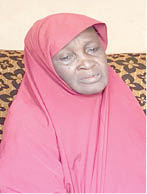
Confessions to the JCI
The aftermath of the massacre was as chilling as the event itself when it was discovered that the bodies of 347 victims had been dumped into mass graves in Kaduna. On April 11, 2016, the Kaduna State government admitted to a Judicial Commission of Inquiry (JCI) that the military had buried these bodies in secret, just two days after the massacre. The official count, based on JCI report is 347, but many believe the true number of the dead is much higher.
Determined to uncover the truth, this reporter visited the presumed site of the mass grave at Batul Muslim Cemetery near Mando, in Kaduna. Accompanied by Mallam Ahmad Abdullahi Mando, a witness to that grim night, this reporter stepped onto the grounds where so many bodies were said to have been buried. Abdullahi recounted how he tracked the vehicles transporting the bodies, pointing to the exact spot where he witnessed the burial.
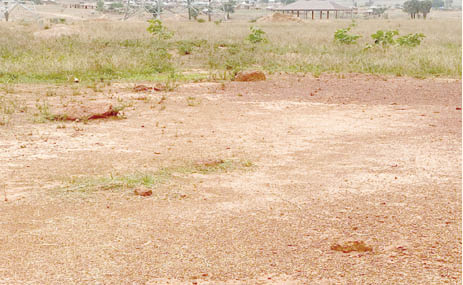
Satellite images examined by Amnesty International from 2 November and 24 December 2015, reveal evidence of disturbed earth — a haunting testament to the massacre. This reporter got the exact coordinates of the site of the mass grave, and verified the claims using Google Earth Pro. He found glaring evidence from satellite imagery fitting the timeline.
Families still in tears over ‘dishonourable’ mass burial
Fatima Muhammad Sani, a 29-year-old widow from Zaria, lost her husband just a year into their marriage, leaving her to raise their daughter alone. The pain of her loss was compounded by the tragedy that took away her brother as well. She is to date, yet to find solace. Her co-wife, Hauwau Ibrahim, aged 40, shares the same grief.
Despite the passage of time, Abubakar Zaki, whose three daughters were killed and Halima Salisu, who suffers from partial paralysis say none of them have gotten justice after what they described as a ‘dishonourable’ mass burial as admitted by government officials. They claimed there was never any form of communication from government officials regarding the remains of their loved ones.
The pain of not being able to bury their dead haunts them, adding to “our already profound grief and trauma,” said Zaki. Fatima and Hauwa lament the failure of the military and government officials to acknowledge responsibility only deepened the feeling of injustice and despair, leaving them with unanswered questions and unhealed wounds.
“What I regret till date is not being able to see the bodies of my three middle-aged daughters,” Zaki told Weekend Trust.
His younger brother, Engr. Abdullahi Muhammad Musa vividly recalled the events. He narrated how he watched as many people were burned alive while others were shot at close range at their temple, Hussainiyya, in Zaria.
The struggle for justice; KDSG keeps mum
Nine years later, no one has been held accountable for the killings despite the indictment of senior military officers by the Judicial Commission of Inquiry (JCI). Families interviewed share a common anguish—the absence of justice. The JCI report called for the prosecution of those responsible, but these recommendations have not been implemented.
Balarabe Lawal, the then Secretary to the Kaduna State Government, had testified that at least 347 people were killed and buried in mass graves. Yet, no soldier has been brought to justice, and the government has failed to fulfil its promise of justice for victims and their families.
This reporter reached out to the Kaduna State Government for updates on possible prosecution of the perpetrators, but the state ignored multiple requests for an interview. Multiple calls and messages to Samuel Aruwan, who served as the then spokesperson to Governor Nasir El-Rufai and later Commissioner for Internal Security and Home Affairs between 2019-2023 were not answered. Aruwan, who currently holds the position of overseeing Commissioner for Security and Home Affairs also failed to respond to an official letter sent to his office.
The intent of these inquiries was to understand the government’s stance on the recommendations of the commission and the government’s next step.
Military silence
Barrister Haruna Magashi, Sheikh Zakzaky’s lawyer, has been fighting for justice since 2015. The legal proceedings have faced numerous obstacles and delays, but he told this reporter that he remains committed to pursuing every legal avenue.
“The case has encountered numerous obstacles and delays, hindering progress towards achieving justice for the victims and their families,” he said.
Efforts to obtain a response from the Nigerian Army have been met with silence. Multiple calls and messages to the Director, Army Public Relations, Major General Onyema Nwachukwu, were neither answered nor returned. An official letter was also sent to the Chief of Army Staff, Lieutenant General Taoreed Lagbaja, following claims that only he could grant such a request to speak on the matter, but as at press time, Weekend Trust received no reply.
This silence leaves a significant gap in addressing the accountability that the affected families and the broader Nigerian community desperately seek.
Was the case closed?
Barrister Magashi, who has been at the forefront of the legal proceedings for the IMN since 2015, provided an update on the current status of the case. He said the IMN withdrew from the Judicial Commission of Inquiry (JCI) when their request to present the IMN leader at the panel was declined. However, following Sheikh El-Zakzaky’s release by a Kaduna State High Court in July 2021, they are actively working to ensure justice is served.
Despite setbacks, Magashi affirmed their unwavering commitment to pursuing legal avenues and advocating for accountability up to the International Criminal Court (ICC).
Seeking clarity on the status of the case from the police and their role, this reporter reached out to the Kaduna State Police Command. After explaining the purpose of the inquiry, the Public Relations Officer of the command, Mansir Hassan declined to comment on the matter. He simply stated: “We cannot speak on this issue because they are a proscribed group; no need to talk on a ‘proscribed’ group, and we are not involved in any case with the IMN.”
Claims of additional mass graves
The IMN said it has compiled a list of over 800 missing individuals since the incident. This number, they claim, is separate from those who were allegedly killed and buried unlawfully. Sheikh El-Zakzaky has repeatedly asserted the existence of about 10 additional mass graves. While the accuracy of these assertions cannot be independently verified, it prompts further investigation.
Several attempts to reach out to the IMN leader to seek the locations of the mass graves he claimed existed, failed. A formal letter requesting his audience was written. Over one month since the letter was acknowledged by the media office of the IMN, there has been no response from Sheikh El-Zakzaky or any of his representatives.
However, Barrister Magashi insists the 10 mass graves exist, but said their locations would not be disclosed until the current government’s stance is assessed. This inability to provide specific details on the locations serves as a hindrance for this reporter to investigate the allegations of these alleged mass graves.
The JCI revelations and death of key witness
The 193-page JCI report reveals significant, yet unaddressed details about the 2015 massacre. Dr. Shuaibu Musa, Chairman of the Medical Advisory Committee at the Barau Dikko Hospital is documented to have witnessed bodies being brought in and evacuated. This journalist contacted him and an interview was scheduled to detail his account. Dr. Musa, however, passed away on June 6, 2024, before he could share his accounts.
While making the government submission at the public hearing of the Judicial Commission of Inquiry, the then Secretary to the State Government, Balarabe Lawal, disclosed that 156 corpses from the Ahmadu Bello University Teaching Hospital and 191 from the Nigerian Army Depot in Zaria, were transported to a mass grave in Mando. The mass burial, conducted under the state supervision and about 40 men of the Nigerian Army, led by an officer in the rank of a Major took place on December 14 and 15, according to the JCI report.
Zaria after December 2015
In the aftermath, Zaria has undergone significant changes. Road blockages and restrictions which used to be common sight have been removed, offering what residents described as a sense of relief.
However, the absence of justice for families whose relatives were killed continues to cast a long shadow over the city. The need for accountability and closure remains a pressing issue for members of the IMN, still grappling with the trauma of that dark day. “The absence of occasional activities by the group is a positive development,” said a resident. According to another, “What happened has happened, but they deserve justice. They are our brothers, they are humans too.”
For many survivors, the Zaria massacre remains an open wound that continues to bleed. Many of them told this reporter that the absence of justice deepens their pain. As Barrister Magashi and other IMN leaders continue the fight for recognition and redress, many survivors advocate for transparency and closure.
This reporting was completed with the support of the Centre for Journalism Innovation and Development and the Open Society Foundations.
